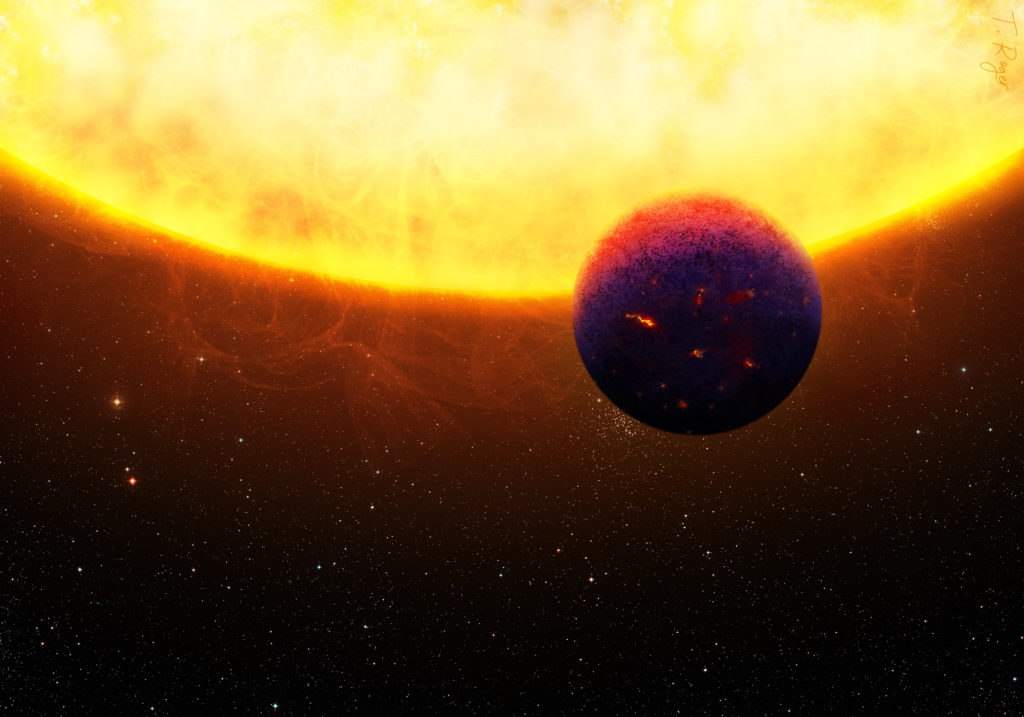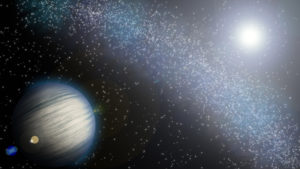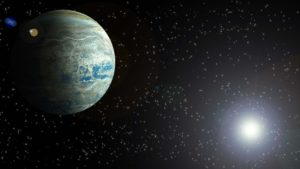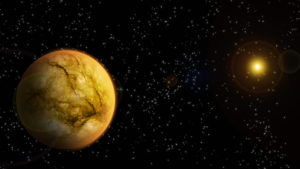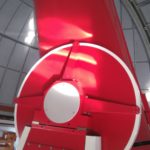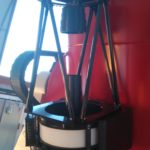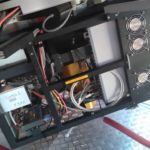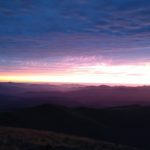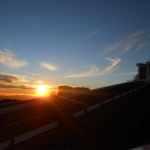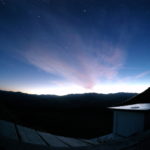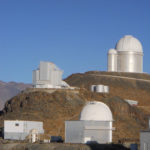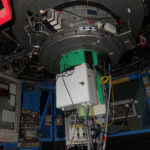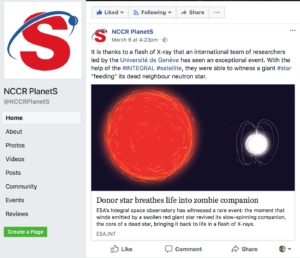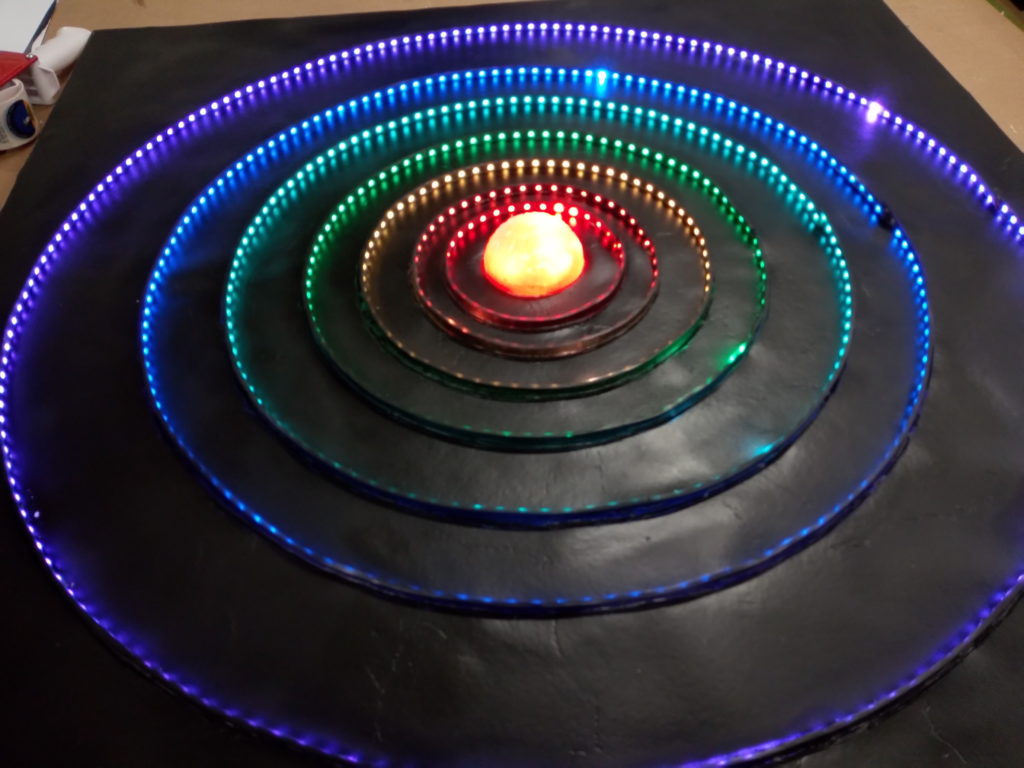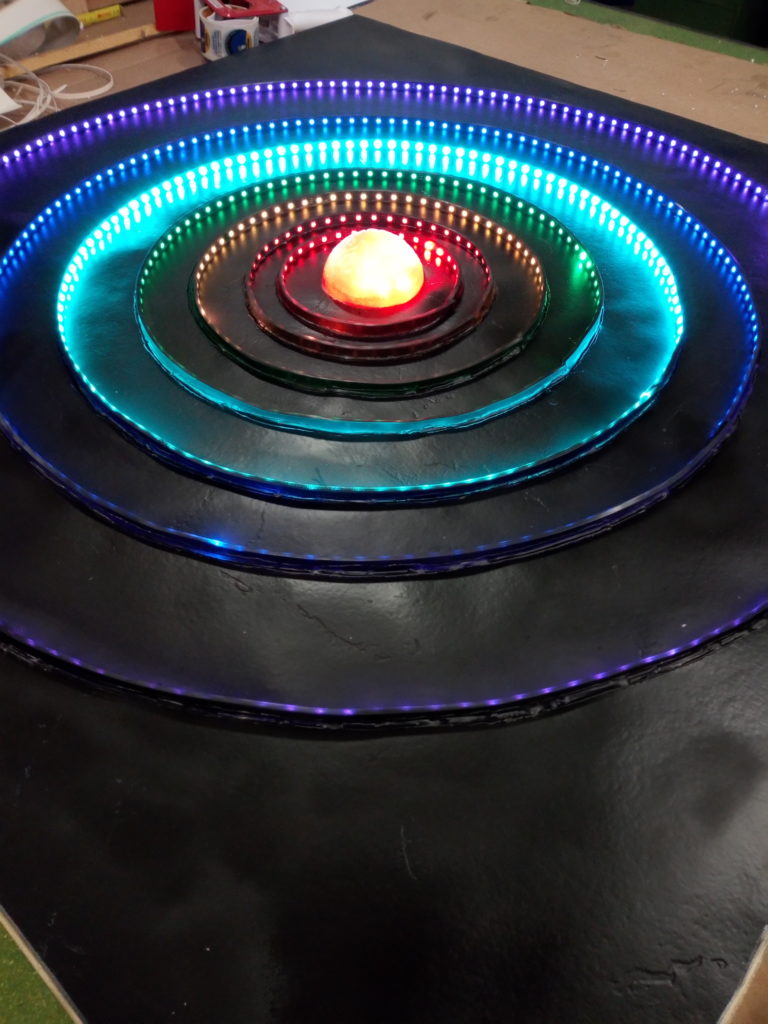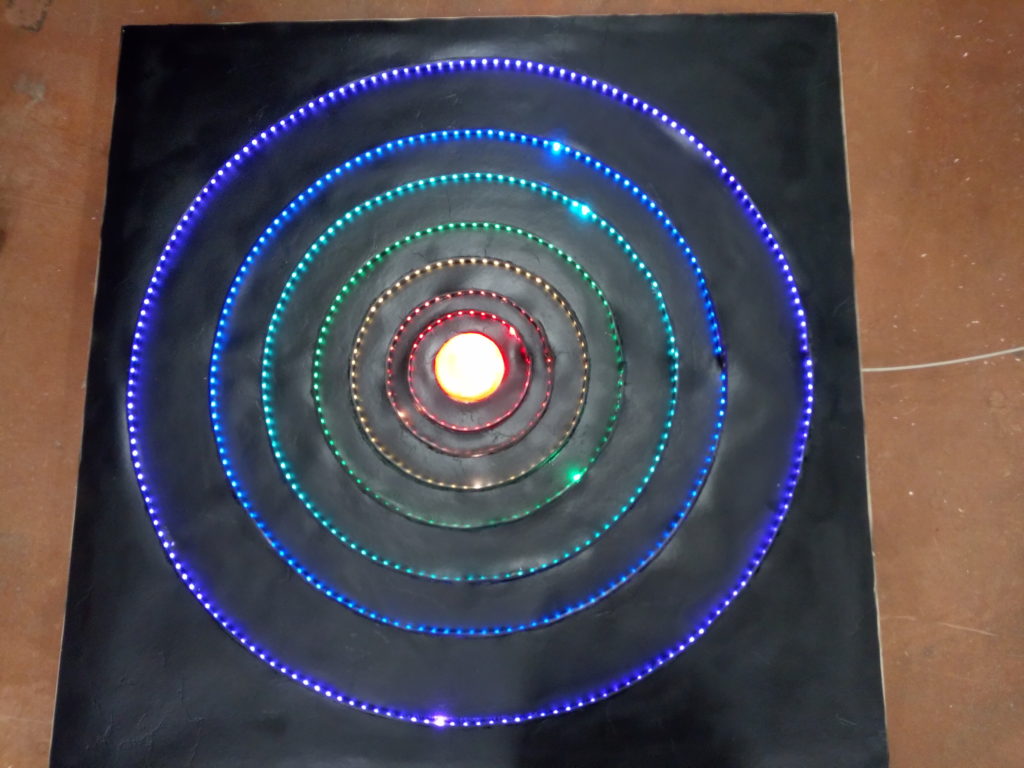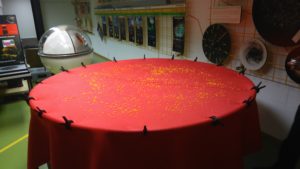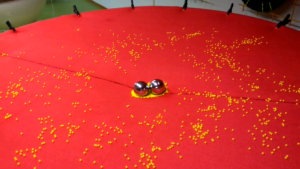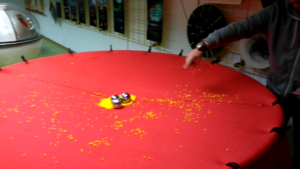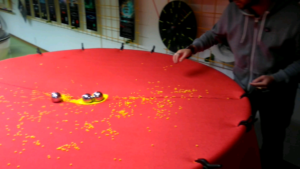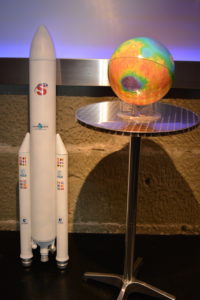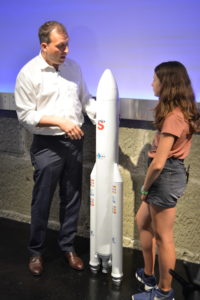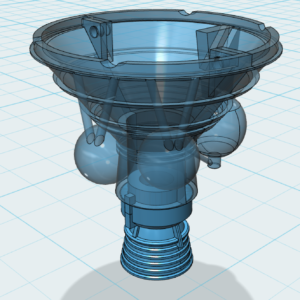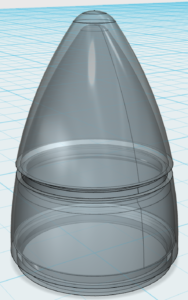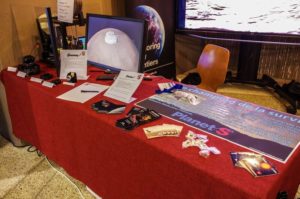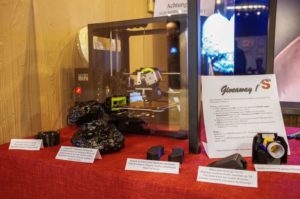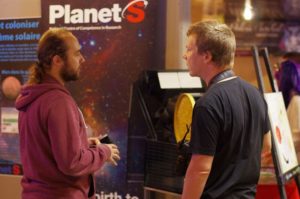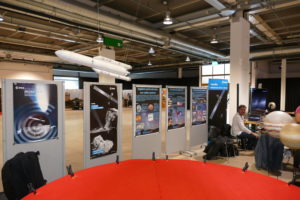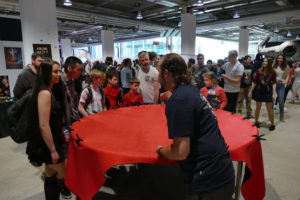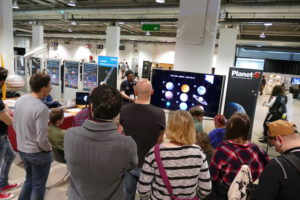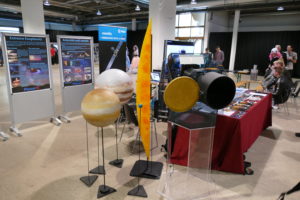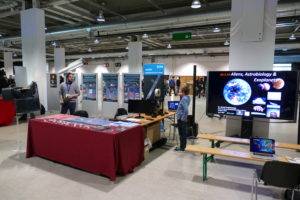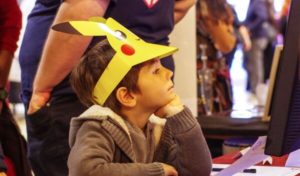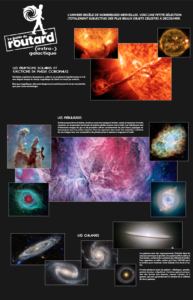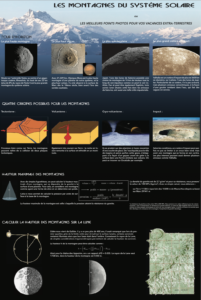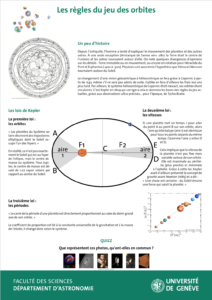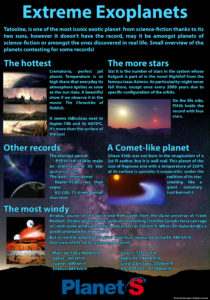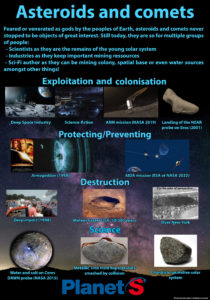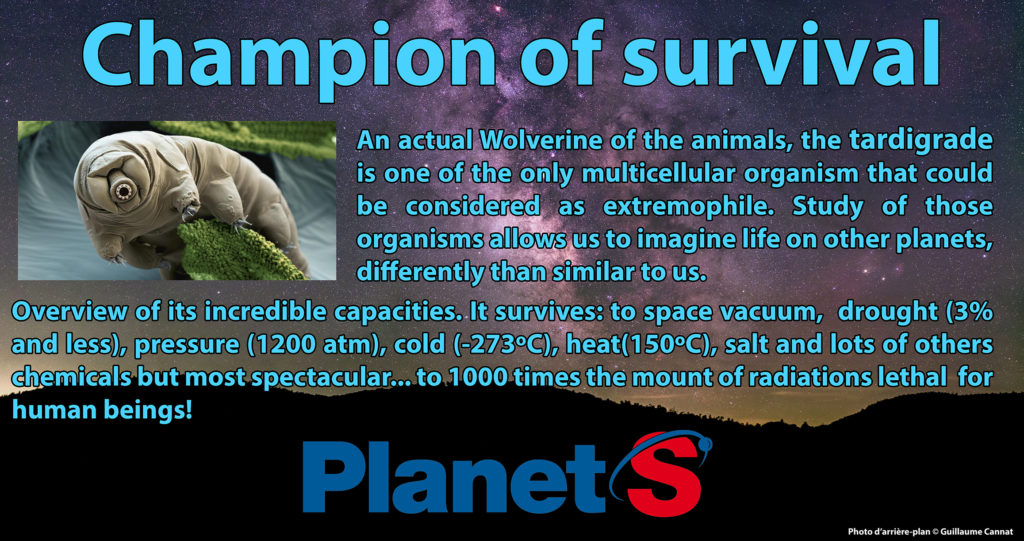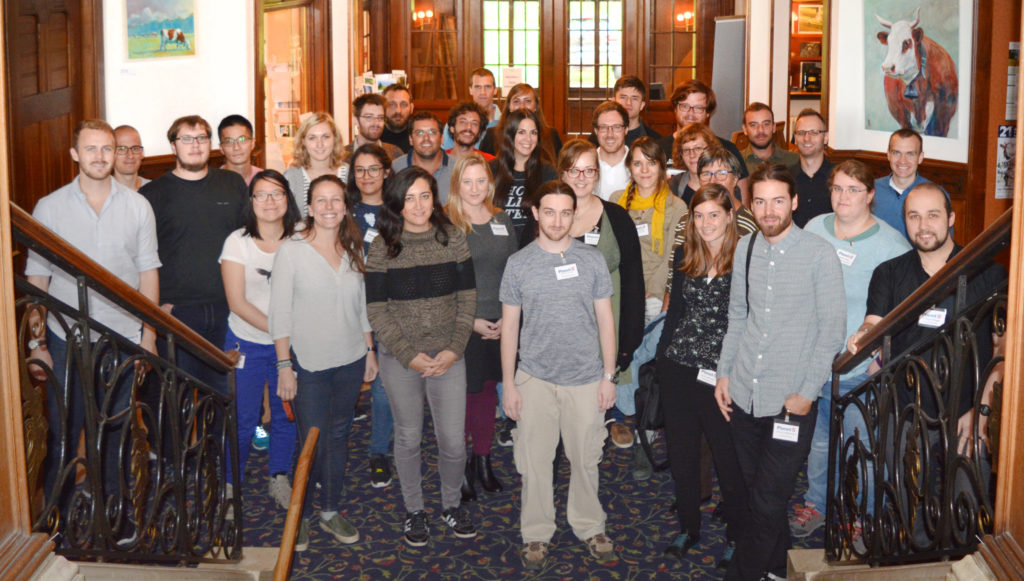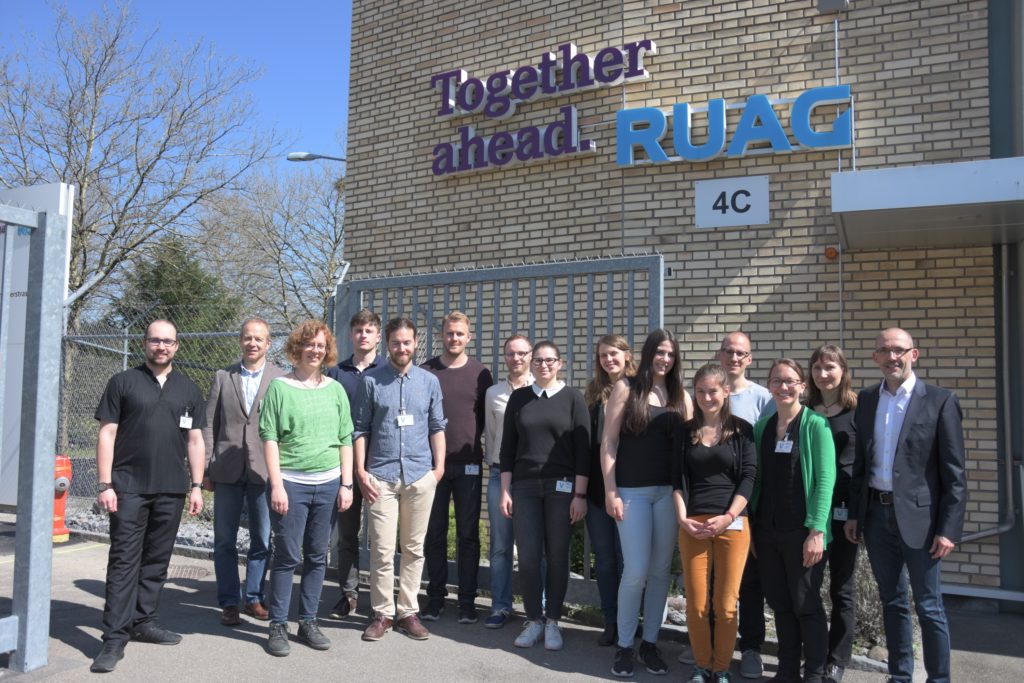I have multiple small side projects next to scientific research, given my love for communication and outreach.
Summary:
Artist’s impression
I have always loved art and computer graphics, thus I appreciate to combine it with another passion: astronomy. I have been collaborating with colleagues to create artistic illustration for them, to join to press release about their article publication. For now, two illustration were made in this context but more are coming. You can read more about the associated research results in those two articles from the PlanetS website: Sapphires and rubies in the sky and Better to dry a rocky planet before use.
Left: Artist impression of 55 Cancri e for Caroline Dorn et al. 2018, about planets made of rubis and sapphires.
Right: Artistic illustration of the dichotomy between planets born in a massive stars-rich environment and not. Massive stars enrich neighbourhood with Al-26, which tends to dry the planetesimals and lead to « dry » planets, while if not, can become ocean world with kilometres deep oceans.
I also carried out an animation on this subject during the 2018 edition of the event Nuits de la science in Geneva. During the event which theme this year was « The art of science », amongst many other art related activity (included g-Astronomy, music, etc.), we proposed to the public to create their own exoplanet artist impression together in ~10 to 15 minutes, using the software Photoshop. This was used as a medium to introduce people to exoplanet related concepts, such as atmosphere, detection, etc. and discuss with them the use we have of an artistic rendering, the rules and compromise we don’t when preparing one. Here are some of the results with the public (so others had rather… interesting… artistic choices).
Observations
I did multiple observing runs on the Swiss telescope Euler, situated in the ESO facility of La Silla in Chile.
Euler is a 1.2m diameter telescope. It is equipped with 3 instruments, in order of use: CORALIE, EulerCam and PISCO. CORALIE is an echelle-spectrograph able to measure radial velocities to an order of tens of metres per second, and his mainly used for that purpose, to detect or follow-up exoplanets candidates. EulerCam is, as its name hint at, a camera, used for transit or galaxy observation. PISCO is a second smaller camera, able to operate in parallel to CORALIE, on the contrary of EulerCam. You can find more about the everyday life of an astronomers in my PlanetS logbook article written during one of my runs. In the meantime, here are a couple of additional pictures of this very beautiful place.
I was also lucky enough during one of my travels, to visit ALMA, a radio-observatory northern in Chile, with a collection of antennas above 5000m altitude!
Communication
I’m participating in the communication team of the NCCR PlanetS. My main task is to supervise the social media of PlanetS and its content. We are a small team of authors (between 2 and 6 depending on the moment) writing each some of the posts for the Facebook page of PlanetS. The post are focusing on the daily life of the NCCR (thesis defences, new members, events, etc.), the science carried in it (press releases, new articles, etc.) and other news about planetary science from collaborators institutions (ESA, ESO, NASA, specific missions and consortia, etc.)
I have also wrote a few articles for the PlanetS’ website and newsletters, including the following:
- An « essay » regarding artist’s impressions and a tutorial to easily make one representing exoplanets.
- The daily life of an astronomer doing an observing run in La Silla.
- Report from the first JURA: JUniors Researchers’ Assembly of PlanetS.
- Details and reports regarding the workshop Linking Industry and Academia.
- When Science meet Art (report from the Nuits de la science 2018 events). Not available publicly.
Outreach
Over the last years, I have carried out multiple outreach activities and developed many projects, you will find details for each of them in the following tabs.
Click on the tabs for more details on the various projects.
- Trappist-1 sound and light show
- Gravity visualisation table
- Ariane V rocket model
- Exhibition during Science-Fiction conventions
- Outreach Posters and Talks
It is my latest project, still in the final stage of building. This was inspired by the awesome Trappist-1 pinball by HotPopRobot itself inspired and done in collaboration with SYSTEM Sounds, the makers of the famous Trappist sounds video.
The sound and light show of Trappist-1 is a one meter by one meter model of the Trappist-1 system to the 1/200 000 000 000 spatial scale and 1/50 000 temporal scale. The orbits are at scale and made of individually addressable RGB LEDs. The only thing not to scale is the M-dwarf star in the center, at it would otherwise be smaller than 2 mm. Each orbit as a different colour and a brighter LED represent the position of the corresponding planet around the star. When reaching a specific point of the orbit, all the orbit is lighting at full brightness to indicate the transit of the planet (one specific direction on the board). It addition, when two neighbouring planets are aligned with the star, a portion of their orbit flash in white, to help visualise the resonances. The phases of the planets are correct but their periods have been slightly adapted in order to show perfect resonances. Indeed, one of the goal of this project, in addition to catch eye and look beautiful and mesmerising, is to have a support to explain several exoplanet concepts: transit detection, TTV (although it doesn’t show any), compact systems, resonances and planetary system architecture.
The sound has not been implemented yet but is in the process to be. Once it will have been completed, all the ressources to build it will be available in open-access on this website. Everything has been made with off the shelf component and the electronic is based on an arduino controller making it easy to reproduce. The code running the arduino will also be made available once the sound will be implemented. This model (same dimensions, etc.) can be built for an approximate price of 250€.
Based on the popular « Gravity visualized » video from Dan Burns, I developed a similar gravity visualisation table for the Observatory of Geneva. The basic principle is the same but the execution is different. The table is a 2 meter diameter metallic circle, covered in a 7mm thick neoprene fabric, representing the fabric of space-time. With various accessories, the table enables to demonstrate a large number of physical phenomenons, and can be used for ~half an hour of explanation of various concepts related to gravity.
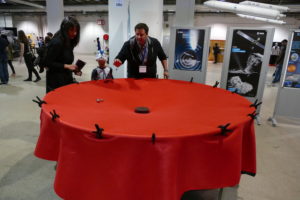
The current sequence of concepts to visualise with the table:
- Curvature of space-time, depending on the mass
- Gravitational attraction
- Orbits: circular and elliptic
- Center of gravity and concept of radial velocities
- Notion of « local gravity dominant body »: Hill radius
- Star-Planet-Satellite system
- Tidal disruption and Roche lobes
- Lagrange points, L1 particularly
- Black holes concept
- Gravitational Lenses, very practical to explain them, and their interest to study both the lensing object and the distant lensed object, and thus also micro-lensing.
- Planetary system formation by accretion scenarii.
- Disc structures
I developed a 1.5 meters tall Ariane V rocket model, the elements were 3D modelled and 3D printed to scale, except for the pipe sections (simple plastic pipe from hardware stores). The primary goal of this model is for exhibition only, as it is a good eye-catcher to spark interest from people. However, it can also be used to explain how a rocket work and the various components, as did Thomas Zurbuchen, Head of NASA Science Mission Directorate, during the recording a TV show for kids (see pictures below).
Fans of science-fiction or « geeks » are usually more interested into science than the general public. As such, they are an ideal target audience for outreach. With this in mind, I developed an outreach project with a stand and exhibition booth for science-fiction convention. So far, this stand was used during the following event: Swiss Fantasy Show 2016 in Morges, and Fantasy Basel 2017 and 2018 in Basel. Those events attracted respectively ~8000, ~40 000 and ~55000 visitors over a week-end.
I made various posters and talks for outreach exhibitions.
- Posters:
- Hitchhikers Guide to the Galaxy phenomenons: Nebulae, Solar flares and Galaxies. (2017, formatting by Sylvia Ekström)
- Mountains of the Solar System: Overview with some records, 4 possibles origins and maximal height. (2017, formatting and content about calculating mountains’ height on the moon by Sylvia Ekström)
- Science vs science-fiction series (2016-2018):
- Extreme Exoplanets
- Champion of Survival
- Explore and Colonise our Solar System
- Asteroids and Comets (content by Pierre Bratschi)
- The laws of Kepler for Night of Science 2016 themed about « The rules of the game » (formatting and illustration by Sylvia Ekström)
- Talks:
- Exoplanets: how to detect them. August 2014 – Web conference.
- Does science-fiction movies cheats with Physics? 2016-2017 – Various outreach events.
- Can a planet have 2 stars like Tatooine?
- Can our world become an ocean-planet like in Waterworld?
- Can you suck the power from your star like the Starkiller base?
- An overview of exoplanetary sciences, from detection to characterisation. March 2018 – Invited talk – Fribourg. And November 2018 – Bern.
Teaching
I taught the following modules as part of the teaching duties at the University of Bern :
- Experimentalphysik für Veterinärmediziner: A general introduction to physics, for the student of veterinary medicine. Exercice series with the student to help the understand. It covers concepts from the fundamental principle of dynamics, gravity, electromagnetism, radioactivity, energy conservation, basics fluid dynamics, geometric optics, etc.
- Praktikum Physik for minors in Physics: practical lessons in labs, focus on optics experiments.
Organisation
- In 2017, I participated in the organisation of the first JURA meeting, supported by PlanetS. The JUniors’ Researchers Assembly was a 3-day meeting from the 11th to 13th September 2107, with a conference format, aim to be only for the juniors researchers of PlanetS. Its schedule was comprised of talks, posters sessions, workshops, special talk (Kathrin Altwegg) and social events. To know more about JURA, you can read my article on the PlanetS website.
- I proposed to the PlanetS Academic Platform, and organised with their financial support, a one-day workshop to be held in Zürich on the 17th of April 2018, on the thematic of the links between industry and academia, what are the interactions between the two in the space domain, and how to transition from one to the other. The workshop included a visit of the company RUAG Space AG, who are involved for example in the construction of Ariane V rockets. For more information regarding this workshop, you can read my article on the PlanetS website.
- I am part of the organisation team of Astro On Tap Bern events. Astro On Tap are events worldwide where astronomers and astrophysicists meet with the general public in a less-formal setting, usually in a bar or cafe, and discuss about astronomy with them. You can know more about the concept in this article. Following are some pictures of the fifth event held on the 11th of February 2019, to celebrate the day of Woman and Girls in Astronomy, organised in the frame of the IAU 100 years’ celebrations.
